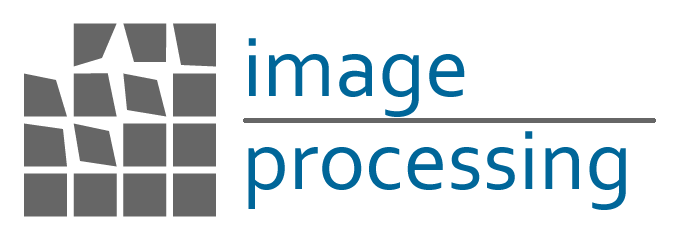
Institute of Information Theory and Automation
You are here
Department of Image Processing
Deputy head:
Secretary:
Phone:
286581419
Publications ÚTIA:
list
 The Department is involved in basic research in image processing and pictorial pattern recognition. Major application areas are biomedicine, remote sensing, astronomy, and art conservation.
The Department is involved in basic research in image processing and pictorial pattern recognition. Major application areas are biomedicine, remote sensing, astronomy, and art conservation.
- Recognition of distorted images and patterns by invariant descriptors regardless of their actual position in the scene
- Registration and fusion of several images of the same scene taken at different times, by different sensors and/or from different viewpoints in order to obtain information of higher quality
- Theory of moment invariants, namely of rotation invariants, affine invariants and invariants to convolution
- Restoration of degraded images, namely multichannel blind deconvolution, edgepreserving denoising, local contrast enhancement, and color transformations
- Image forensics - detection of image forgeries
- Cultural heritage applications - cooperation with art conservators in order to facilitate the conservation and material analysis work
Department detail
Duration: 2021
- 2021
Duration: 2021
- 2024
The project aims at developing a conceptually novel approach to inverse problems by proposing
a unified theory of invariants to integral transformations using projection operators, and applying
it to image restoration and classification problems in biomedical imaging and robotics.
Duration: 2020
- 2021
Řešení automatické analýzy spadu v úlech za účelem detekce Varroa pomocí metod digitálního zpracování obrazu
Duration: 2020
- 2022
The main objective of the project is to develop a dairy cow health control system, the ultimate goal of which would be to significantly reduce the use of antibiotics in the treatment and prevention of infectious mammary gland inflammation.
Sub-goals:
- Design a system of continuous microbiological diagnostics on dairy farms
- Monitor the health and economic benefits of consistently applyi
Duration: 2019
- 2022
Main goal of the project is to develop a new tool for fast and comparatively cheap inspection of bridge structures as a critical part of transport infrastructure, demanding periodic monitoring to ensure traffic safety.
Duration: 2019
- 2021
The aim of the VKG 3.0 project is a new system for the diagnosis of vocal disorders, consisting of a new type of multi-line video camera and data processing software.
- ‹ previous
- 2 of 12
- next ›
2022-09-29
The President’s Award of the Czech Science Foundation was given to Filip Šroubek for outstanding achievements in the GA...
2021-06-27
Jitka Kostková, a former Ph.D student of Jan Flusser, was awarded by the Antonín Svoboda Award 2020 for the best Ph.D...
2021-05-01
ZOI team Adam Novozámský, Aleš Zita, and Barbara Zitová were awarded the Best Paper 2020 in the category Basic Science...
2020-11-26
Ve čtvrtek 26.11. 2020 středoškoláci - stážisté programu Otevřená věda - představili výsledky své práce na konferenci...
2020-06-27
Jitka Kostkova, a PhD student of Jan Flusser, has won the prestigeous Joseph Fourier Prize in Computer Science for her...
2019-10-16
Jan Kotera and Filip Šroubek from the Dept. of Image Processing (ZOI), and D. Rozumny and J. Matas from the Czech...
2018-06-18
Your greatest shade of blueMadonna of the Rabbit: Spectral map of blue pigments
2016-12-09
Association of Innovative Entrepreneurship of the Czech Republic awarded Ing. Milan Talich, Ph.D. and his team the main...
2015-11-30
Zuzana Bílková, Ph.D. student in the Dept. of Image Processing (ZOI), received the first price in the Cisco Outstanding...
2015-10-14
Dr. Filip Šroubek, Res.Prof. received the scientific title "Research Professor in Physico-Mathematical Sciences" from...
2015-03-09
Jan Kotera, Ph.D. student in the Dept. of Image Processing (ZOI), received the Best Student Paper award at the Digital...
2013-08-27
Jan Kotera, Ph.D. student in the Dept. of Image Processing, received an award for outstanding contribution at the 15th...
2013-08-27
Jan Kotera, Ph.D. student na oddělení zpracování obrazu, spolu s Filipem Šroubkem a Peyman Milanfarem získali ocenění (...
2013-06-05
The President of the Academy of Sciences of the CR granted The Otto Wichterle Award for 2013 to promising young...
2013-06-05
Předseda Akademie věd ČR, na základě návrhu poroty pro udělování Prémie Otto Wichterleho mladým vědeckým pracovníkům v...
2012-08-02
Cyril Hὅschl, a Ph.D. student in Dept. of Image Processing, was awarded the Innovation Award given by The International...
2008-06-08
Akademická rada Akademie věd ČR, na základě návrhu poroty pro udělování Prémií Otto Wichterleho mladým vědeckým...
2007-06-25
Za dosažené vynikající výsledky velkého vědeckého významu obdržel ocenění 26. června 2007 ve vile Lanna autorský tým (...
2007-02-28
V roce 2007 byla udělena Cena předsedy Grantové agentury ČR 2007 prof. Ing. Janu Flusserovi, DrSc. za projekt - Fúze...
2006-05-31
Hlávkovu cenu pro mladé vědecké pracovníky získal v roce 2006
Ing. Filip Šroubek, Ph.D.
z Ústavu teorie informace a...
2005-12-31
Akademická rada Akademie věd ČR, na základě návrhu poroty pro udělování Prémií Otto Wichterleho mladým vědeckým...
2003-06-30
Hlávkovu cenu pro mladé vědecké pracovníky získala v roce 2003
RNDr. Barbara Zitová, Ph.D.
z Ústavu teorie informace a...
2001-12-31
Akademická rada Akademie věd ČR, na základě návrhu poroty pro udělování Prémií Otto Wichterleho mladým vědeckým...



















